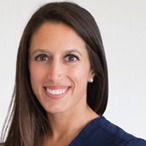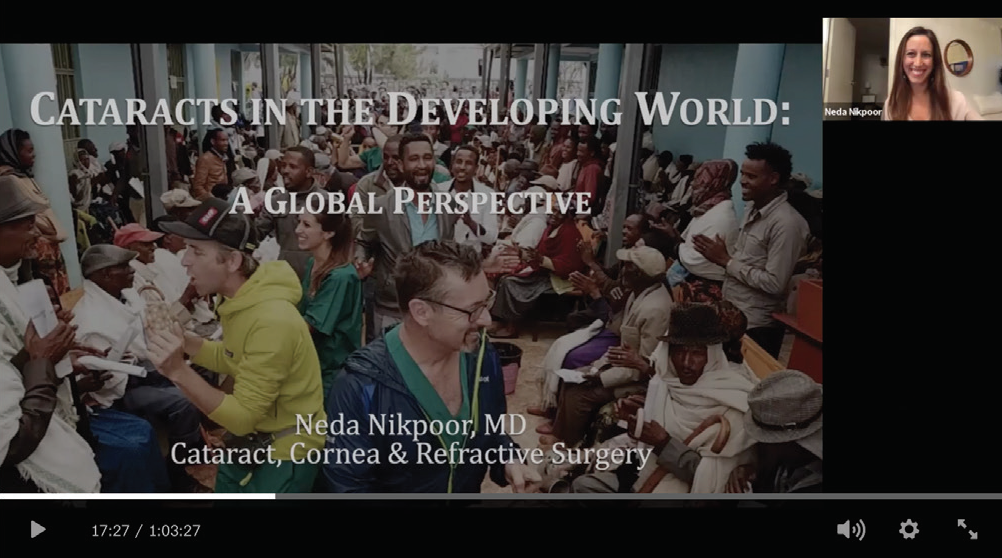
Working with optometric colleagues allows me to deliver the best care possible to my patients. As primary eye care providers, optometrists know their patients incredibly well and have often been taking care of them for years. Not only can ODs refer patients to me, but they can also often help guide patients to the most suitable procedure and technology for their lifestyle. Aligning with and educating optometric colleagues can lead to better outcomes for my patients, and it develops rewarding professional relationships that enrich my career.
TRAINING EXPERIENCES
My earliest exposure to ophthalmology was in college in Oklahoma, where I sensed tension between the optometric and ophthalmologic communities. Like a few other states, Oklahoma is fraught with scope-of-practice turf battles, and many ophthalmologists have not-so-nice things to say about their OD colleagues. Fortunately, during my training at the Bascom Palmer Eye Institute in Miami, I worked alongside optometry residents who were outstanding doctors and graduated at the top of their class. At Bascom Palmer, I saw optometrists who were highly specialized in contact lenses, glaucoma, and refractive surgery working alongside ophthalmologists in a complementary way.
During my global ophthalmology fellowship with Geoffrey Tabin, MD, I became acquainted with incredibly efficient eye care delivery systems around the world in which members of the team were used to their highest potential by only performing tasks at their skill level. This facilitated the delivery of care to the largest number of people as efficiently as possible while maintaining high quality and achieving excellent outcomes.
EARLY YEARS IN PRACTICE
I kept the framework of the systems I had observed during my training in mind when I entered the workforce and decided to join a large referral practice in Southern California. I found having a large support network of optometrists to be appealing because it enabled me to care better for more patients than I could alone.
My first practice had more than 2,000 optometrists referring patients to a network of surgeons across multiple locations in several states. The robust network of optometrists referred a high volume of surgical patients to this busy cataract and refractive practice, and a large team of administrative staff was required to coordinate care for patients and communication with the doctors. A team was dedicated to facilitating collaborative care by providing ODs with marketing materials, referral forms, and extensive educational opportunities.
I met with my referring ODs two to four times per month at educational events of various sizes. Our frequent interactions allowed me to form meaningful professional relationships. The friendliness of these relationships and the fact that the providers all had my cellphone number meant that they felt free to call me to discuss their patients anytime. They were comfortable contacting me directly if they encountered an issue or if they preferred a different treatment than what had been planned. This open channel of communication led to better patient care and outcomes, which is the fundamental goal of collaborative care.
CURRENT PRACTICE
When I moved to Hawaii and joined Aloha Laser Vision in the beginning of 2020, it was largely because of the patient-centric collaborative care system that my senior partner, Alan Faulkner, MD, created. We provide outstanding care to patients in our surgical referral practice, and we work closely with our referring ODs to improve patient experiences and postoperative outcomes.
Hawaii is a close-knit community where patients are often loyal to their optometrists for generations, so it is incredibly helpful to receive input from referring ODs when determining the best treatment for our patients. Additional factors contributing to patients’ preference for collaborative care are interisland travel and heavy traffic. This situation is not unique to Hawaii; in many rural locations, patients must travel long distances to receive routine postoperative care, and in urban locations, traffic can make traveling to a surgeon’s office challenging. Collaborative care allows patients to see their regular doctor after surgery, which is often more convenient and comfortable for them.
FACTORS IN SUCCESS
Communication. In my experience, the key to ensuring successful collaborative care is effective communication. Systems must be in place that allow referring ODs to send patient records and recommend treatment, and surgeons must communicate with ODs the expected outcome, treatment regimen, postoperative course, and deviations from the usual regimen. Patients must be comfortable with the collaborative arrangement, and their decision in favor of or opposed to comanagement should be respected. That said, patients must be educated that their referring doctor is trained and capable of managing routine postoperative care.
When collaborative care is selected, our practice has systems in place to receive referral paperwork (our referral form and the referring doctor’s notes/recommendation), formally obtain the patient’s consent, and send all encounter notes to the referring doctor. We explain the process—including the division of payment for services—to the patient. Using an OD login on our website, referring optometrists can find the proper paperwork for referring a patient. Often, however, they fax their notes or call or email our office and request that their patients be scheduled for a surgical consultation.
Postoperative care. Dr. Faulkner and I see patients on postoperative day 1 so that we can closely monitor surgical outcomes and quickly identify variations from expectations. We also see patients who receive premium IOLs 4 to 6 weeks after surgery for a refraction to facilitate nomogram refinement and to determine if an enhancement is warranted. In the event of a problem with surgical technique, a surgical complication, or unhappy patients, I see them as often as necessary regardless of whether they are also seeing their OD.
At a typical visit 1 day after surgery, we reassure patients that they are doing well and tell them that the referring optometrist will assume responsibility for care. I tell patients that they are welcome to return to see me anytime and that transferring their care back to the OD does not mean that they need a referral to see me. Once I have operated on someone, I feel they have a right to see me for a postoperative issue should they feel it’s necessary.No patients have ever bypassed their ODs to see me, but knowing that I am available can help them feel comfortable with the comanagement arrangement.
Reinforcement. Optometrists can be important allies for reassuring patients who have a guarded prognosis or in whom postoperative healing is prolonged, such as someone with Fuchs dystrophy whose visual recovery is delayed because of corneal edema or someone who needs treatment for dry eye disease or an enhancement. Patients appreciate hearing the same message from someone they trust.
Discussing cases with the referring doctors helps us to coordinate how we serve our patients. When patients must wait to undergo a laser enhancement, for instance, they may need temporary glasses. Many committed ODs with whom I work will change the lenses in these patients’ current frames to save them money and help them through the healing period.
Education. One of our primary roles in collaborative care is to educate our optometric colleagues. While at my first practice, I frequently gave talks for an optometric audience, and I engaged in countless hours of conversation over shared meals with referring optometrists. During the COVID-19 pandemic, I have sought creative ways to educate my new optometric colleagues in Hawaii. In-person continuing education (CE) events and dinners were out of the question when I first moved to the state; I worked with Dr. Faulkner and our in-house ODs to develop a virtual CE webinar series. We now deliver lectures monthly (Figure), and we have been successful in getting CE credit certification for these events. Our lecture series provides updates on technologies and techniques in ophthalmology, and it allows optometrists who might not have had a chance to engage with each other or with us to connect via Zoom. We have opened our series up to guest lecturers who are ophthalmologists from outside our practice so that we can provide a well-rounded CE webinar series across all specialties.

Figure. Dr. Nikpoor participating in one of Aloha Laser Vision’s virtual CE webinars.
Educational activities such as the CE series can raise awareness in the optometric community of our current treatment approaches. I find that these events allow our referring doctors to get to know what we do, how we think, what we prioritize, and how we customize treatment to each patient. We routinely ask for feedback and topic suggestions to keep the content relevant to ODs’ needs.
Comanaging Patients With Telehealth
Ranya Habash, MD; Damon Dierker, OD, FAAO; Brianna Rhue, OD, FAAO; and Blake K. Williamson, MD, MPH, MS, deliberate the best ways to aid in comanaging telehealth patients while staying up to date on reimbursement and increasing accessibility.
CONCLUSION
Working with optometrists has been an incredibly rewarding and enriching part of my career. The professional relationships and friendships that I have developed allow me to deliver better patient care and join a community of eye care providers in Hawaii. Entrusting postoperative and routine eye care to my referring optometrists allows me to focus on doing what I love—performing surgery to correct people’s vision and improve their lives. It truly is a team effort.




